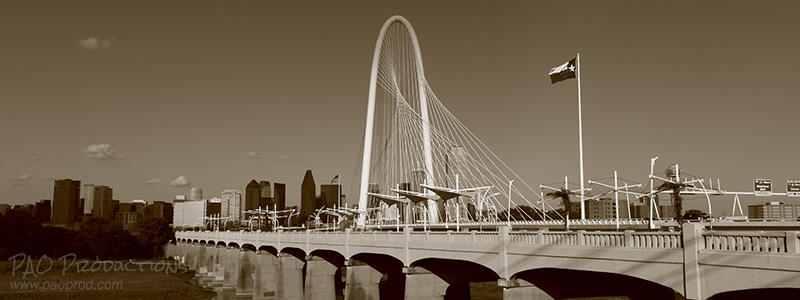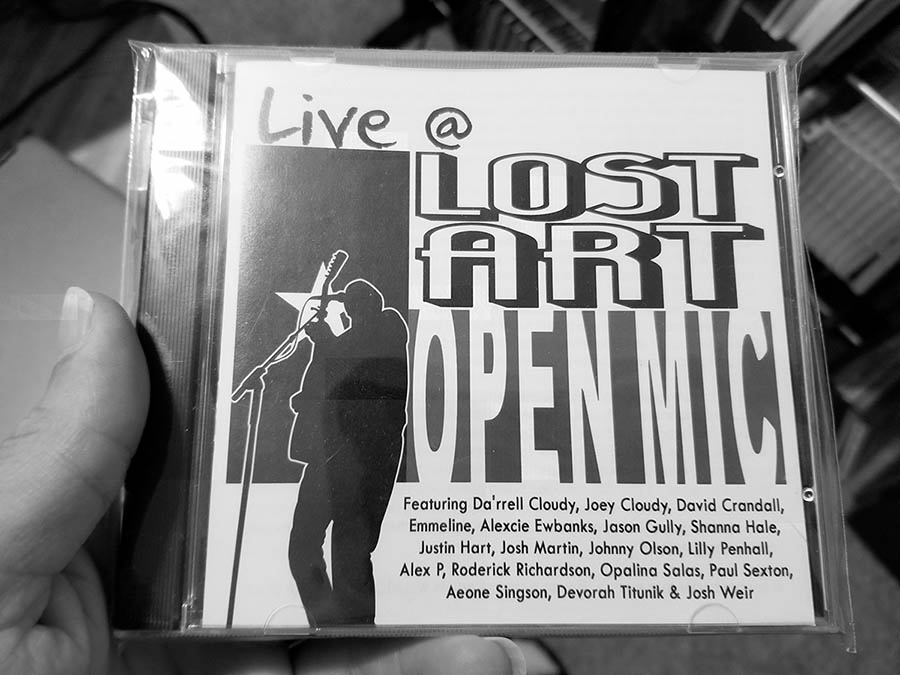
The recording setup was a mess, a jerry rigged tangle of Radio Shack cables, plug adapters, splitter boxes, and hum destroyers patched into audio equipment from the 1970s and (after a few months) a laptop. The result of weeks of experimentation with the components and a lot of trial and error, this setup got the job done, but looking back at it now I can't help but feel twinges of embarrassment over it all. Audio was initially recorded directly onto 2 track tape reels, then later digitized by way of an INport USB device patched into a Windows XP desktop computer and tweaked in a low cost audio editing program. Eventually the live audio signal would be routed through the tape machine into a used laptop which recorded a digital duplicate in real time. The final compact disc release, sampling five months' worth of these efforts, was a testament to the power of amateur ingenuity on no budget. It's crazy that I had the nerve to do it at the time.
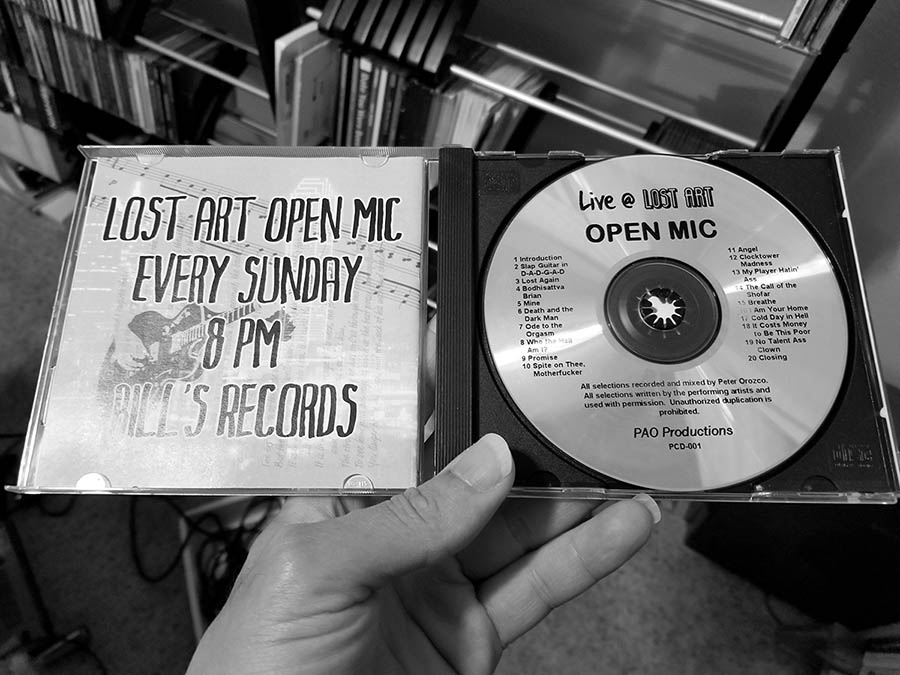
Production of the physical product was as much of an adventure as its recording had been. Initially I wanted to have thermally printed disc labeling, so I ordered a large package of Taiyo Yuden blank CD-Rs (a brand well recognized in burning circles for their high reliability and unbranded top surfaces) and I invested in a used portable CD labeler via eBay. Unfortunately, the labeler failed immediately upon receipt. I subsequently shelled out the money for a brand new unit, but when I eventually began the process of labeling the first run of discs, that unit too failed after only 19 print cycles. With two failures in a row, and neither the time nor the inclination to invest in a third thermal machine, I was forced to turn to paper labels.
Another significant production hiccup involved the booklet's planned gatefold illustration. Some time into the production period, I checked in with the person who had been tasked with art design only to find that nothing had been done. After a somewhat heated discussion during which I was told that this was because the CD release date wasn't right around the corner, and to which I admonished that time had to be allowed for potential design changes and for printing, I made the decision to hand the design work to someone else. In the end, while the originally tasked artist did deliver as far as the front and back booklet covers and the back tray, the gatefold collage was put together by Aeone Singson, one of the spoken word artists whose performances appeared on the CD. Alex composed and delivered the liner notes in a timely fashion, and everything was sent off to be printed.
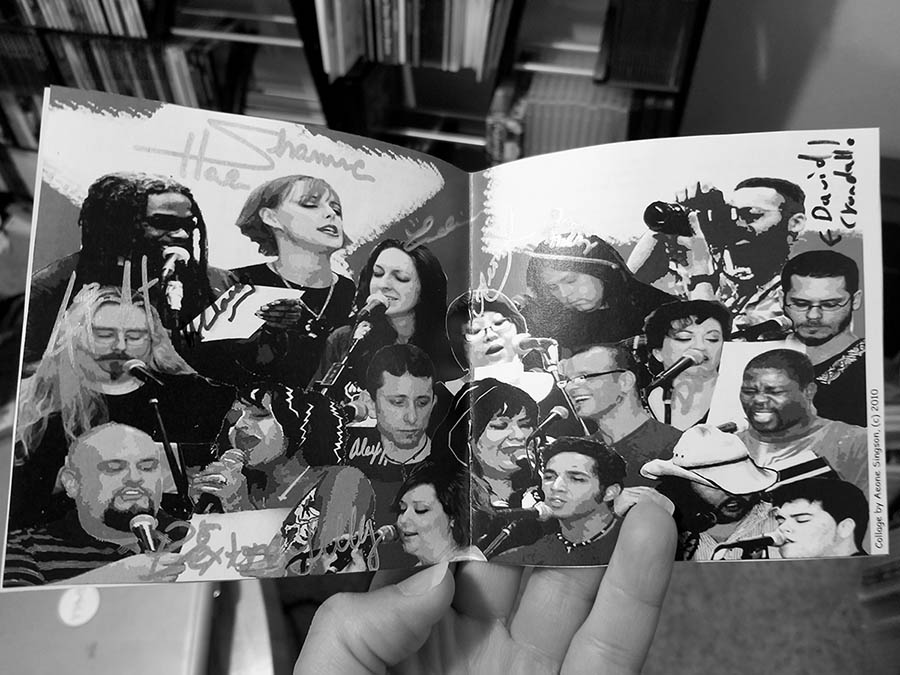
Unfortunately, even this would not be the end of the issues. The printing company I used required that the source files be submitted in CMYK format, but the artist who designed the booklet designed the graphics using the RGB color space. These files were re-saved in CMYK and submitted, but when the printed sheets arrived, the colors were off, significantly off. I decided I could live with the booklet front and back, but the rear tray was a no go. In the end I had to print every one of the rear tray cards using the photo printer and inks I used for printing my photography work, and because of this the out of pocket production costs skyrocketed. Assembly of the first batch of final units - cutting papers, printing the interior liner notes, preparing the actual CDs, assembling everything together in jewel cases, and sealing each finished product in plastic - kept me up late into the night. Fortunately, the eve of release night was the one where we turned the clocks back an hour, which helped somewhat. Ultimately, 70 - 80ish copies were ready to go in time for open mic night.
From release night onward, I prepared additional copies of the CD as needed until all raw materials had been exhausted, with the final number produced totaling somewhere between 225 and 250 copies. A few people (Aeone in particular) did donate money to help offset the ballooning production costs, but the large majority of the money spent came directly out of my pocket. I came to view the entire experience as having been a major outpouring of time, effort, and money into a largely thankless endeavor, something undertaken to help support a community the majority of whose members were largely cliquish and unappreciative. While I continued to record individual poets and spoken word artists for a while after the Lost Art open mic wrapped in June 2011, I eventually soured on working with most of them and left the community altogether by 2013.
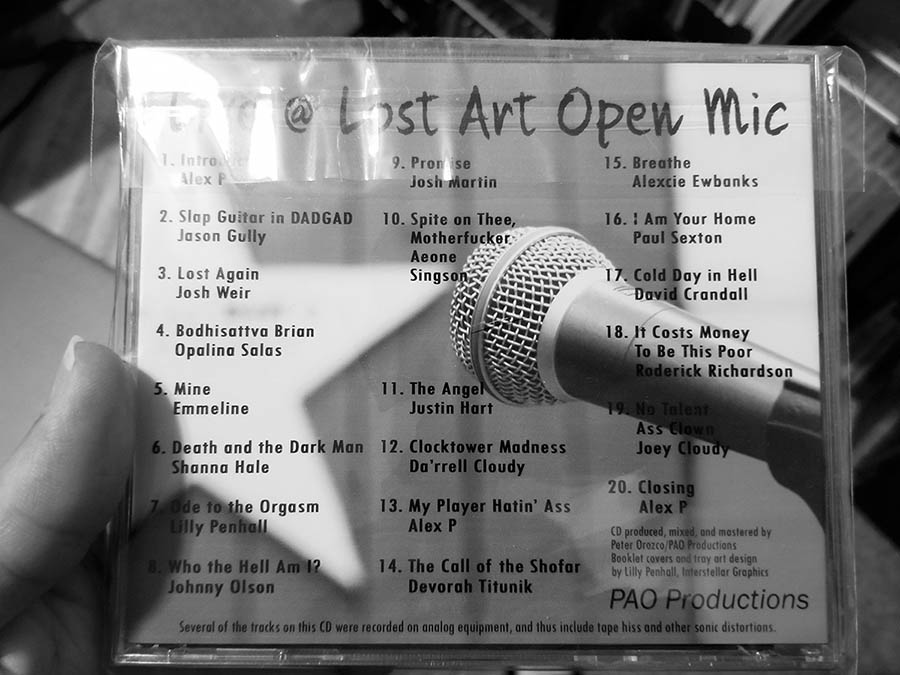
So what do I think of the disc today, and how do I feel it holds up twelve years later? To be honest, my feelings are mixed. On the one hand, I'm a bit proud of having successfully put it all together, and pleased with the packaging as a whole. On the other hand, listening to it today, my overall impression is that it's a snapshot of that part of the DFW open mic scene (and its cliques) with which I was involved at the time. Most of the material is very ho-hum, a reality that is all the more apparent at time when I have long ceased to view any of it through rose colored glasses or with a perspective colored by personal relationships with the people featured on it. And to be completely candid, were still quite a ways away from peaking as of November 2010. Most of the very best performances we would see at the open mic would come after the compilation and release of our big promotional disc. The CD presents represents some of the highlights of our run up until that time, but if I were to put together an "Best of Lost Art" collection today, only a smattering of the selections on the Live at Lost Art Open Mic CD would make the cut.
For the first few years following Live at Lost Art's debut, I would listen to it all the way through on or about the anniversary of release night. Until recently, it had been years since I gave it more than a passing thought or mentioned it very briefly in conversation with someone while recalling things I've done and projects I've been involved in. As of this writing, it's been nearly twelve years since the open mic ended its run, and everyone involved is in a different place compared to where we were in 2010 and 2011. So the Live at Lost Art Open Mic CD stands largely as a relic of a now bygone time, a time when politics seemed simpler and a bunch of local writers and musicians from different walks of life (but with a shared passion) would come together at Bill's Records on a Sunday night.
Download the Live at Lost Art Open Mic CD in mp3 format.
